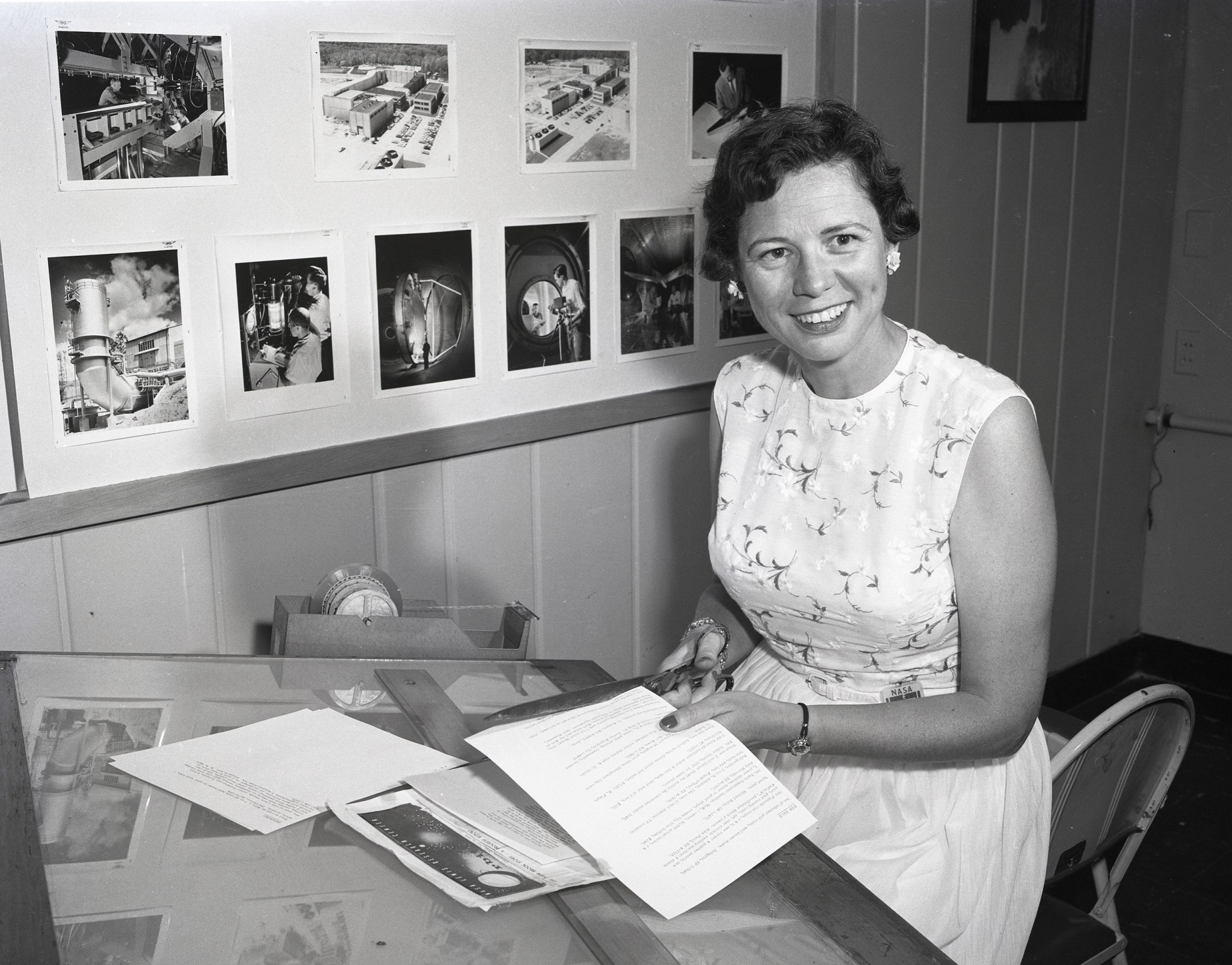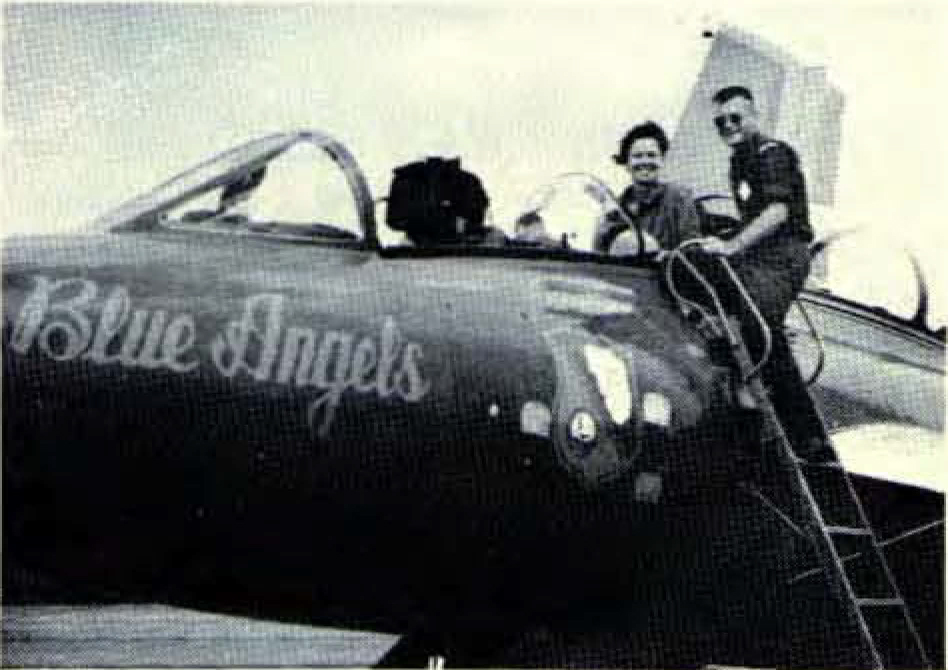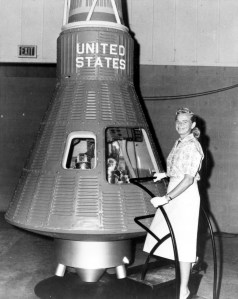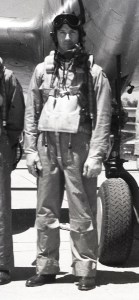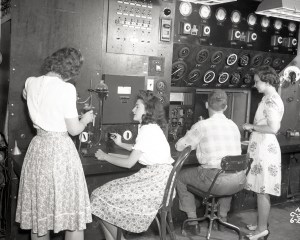On August 15, 1959, NASA editor Marjorie Hyre experienced the thrill of flying in a high-speed Navy fighter jet while the Blue Angels were stationed at the Lewis Research Center preparing for the Seaway Air Show at Burke Lakefront Airport.
The air show was Cleveland’s first major aeronautical event since the cancellation of the National Air Races in 1949. It included aerial demonstrations by the Air Force, Marines, and Coast Guard, as well as ground-based equipment from the military, the Cleveland Air Defense Command, and NASA Lewis. The Blue Angels, however, were the feature attraction.
The Navy established the flight demonstration team in 1946 to stimulate public interest in naval aviation in the post-war era. The Blue Angels were flying Grumman F11F-1 Tigers in 1959 but retained a two-seat F9F-8T Cougar to provide rides to guests.
Prior to the Seaway event, the Blue Angels invited various Cleveland officials, including Lewis Director Raymond Sharp, to take a ride in the two-seat Cougar. The 65-year-old Sharp offered his slot to the adventurous Marj Hyre, who loved to fly, competed at various sports, and raced her Triumph sports car in local competitions.
Hyre’s interest in photography led to her processing motion pictures for the Navy during World War II and a brief stint as a commercial photographer afterwards. In 1947 she joined Lewis’ Photo Lab where she performed studio photography and contact printing.
In September 1955, Hyre became the editor of the Wing Tips newsletter. She shot many of the photographs herself and travelled to Cape Canaveral, the High-Speed Flight Station (known today as Armstrong Flight Research Center, and other locations for stories.
The day of her flight, Hyre climbed a ladder and settled into the Cougar’s rear cockpit. A Navy crewman explained the ejection system as he helped her with the helmet, oxygen mask, and microphone. The pilot, Lt. Mark Perrault, then taxied by the other fighters and shot down the runway and into the Cleveland skies.
Soon they were 13,000 feet above Lake Erie where Perrault explained the upcoming maneuvers over the intercom. He first put the Cougar through an inverted roll, then an intense 4.5 G right angle, followed by a dive that produced six seconds of microgravity. While returning to the center, Perrault taught Hyre how to bank the aircraft and let her fly the Cougar for several minutes.
Hyre was among the 150,000 the next day who endured the August heat to watch the Blue Angels perform their precision maneuvers, often in tight formations with just feet separating the wingtips. Their 1959 routine was the first to include the low altitude flyby of two vehicles sandwiched cockpit-to-cockpit.
The next year Hyre married Sharp’s executive officer Wilson Hunter and moved to Washington D.C. when he was reassigned to headquarters. The couple relocated to Australia in 1966 where Hunter oversaw the construction of NASA’s satellite tracking systems. There, Hyre formally learned how to fly, took up painting, and began collecting rare rocks. They returned to Cleveland in the late 1970s.
Hyre passed away in 2006.
Robert S. Arrighi
NASA’s Glenn Research Center






























